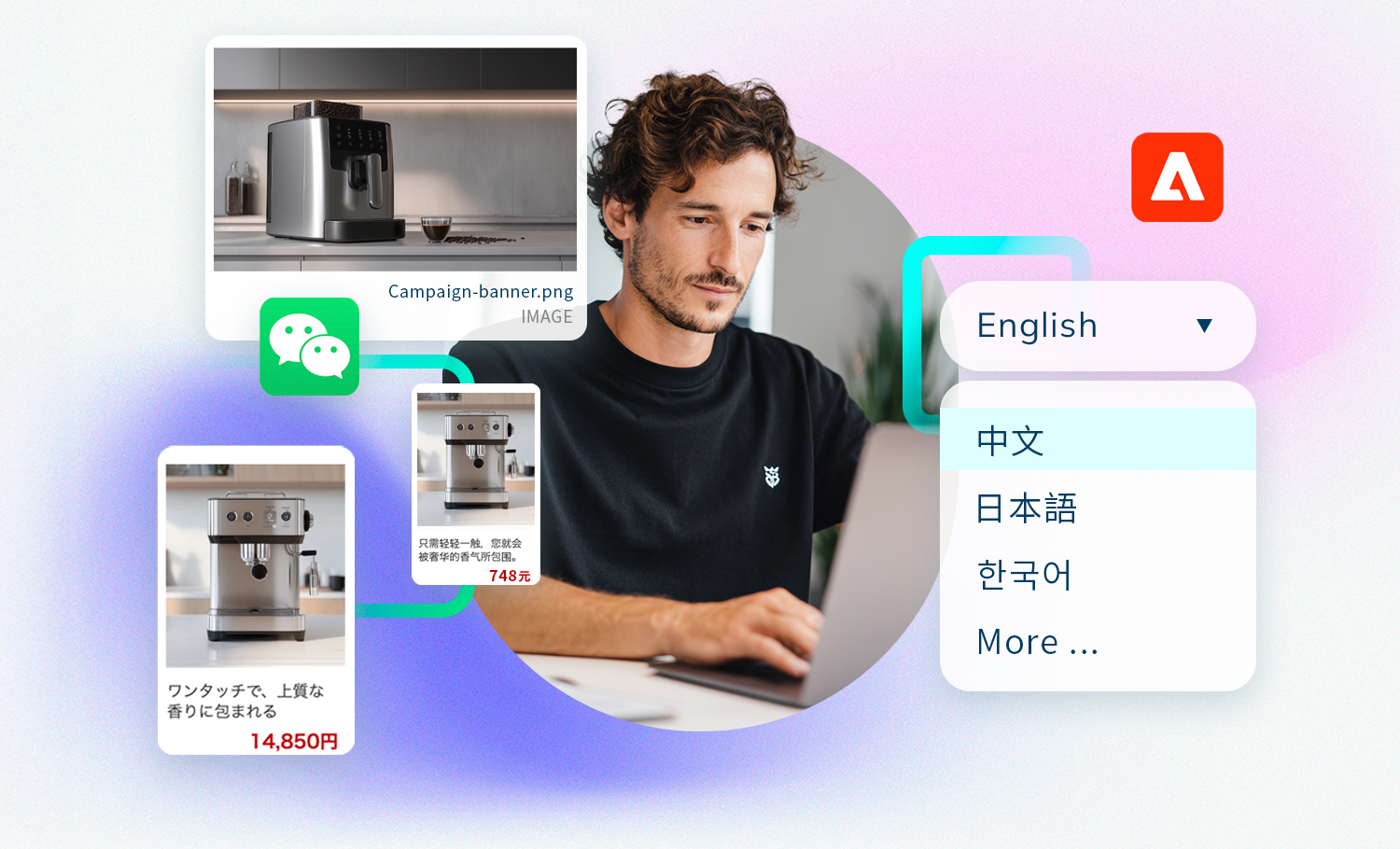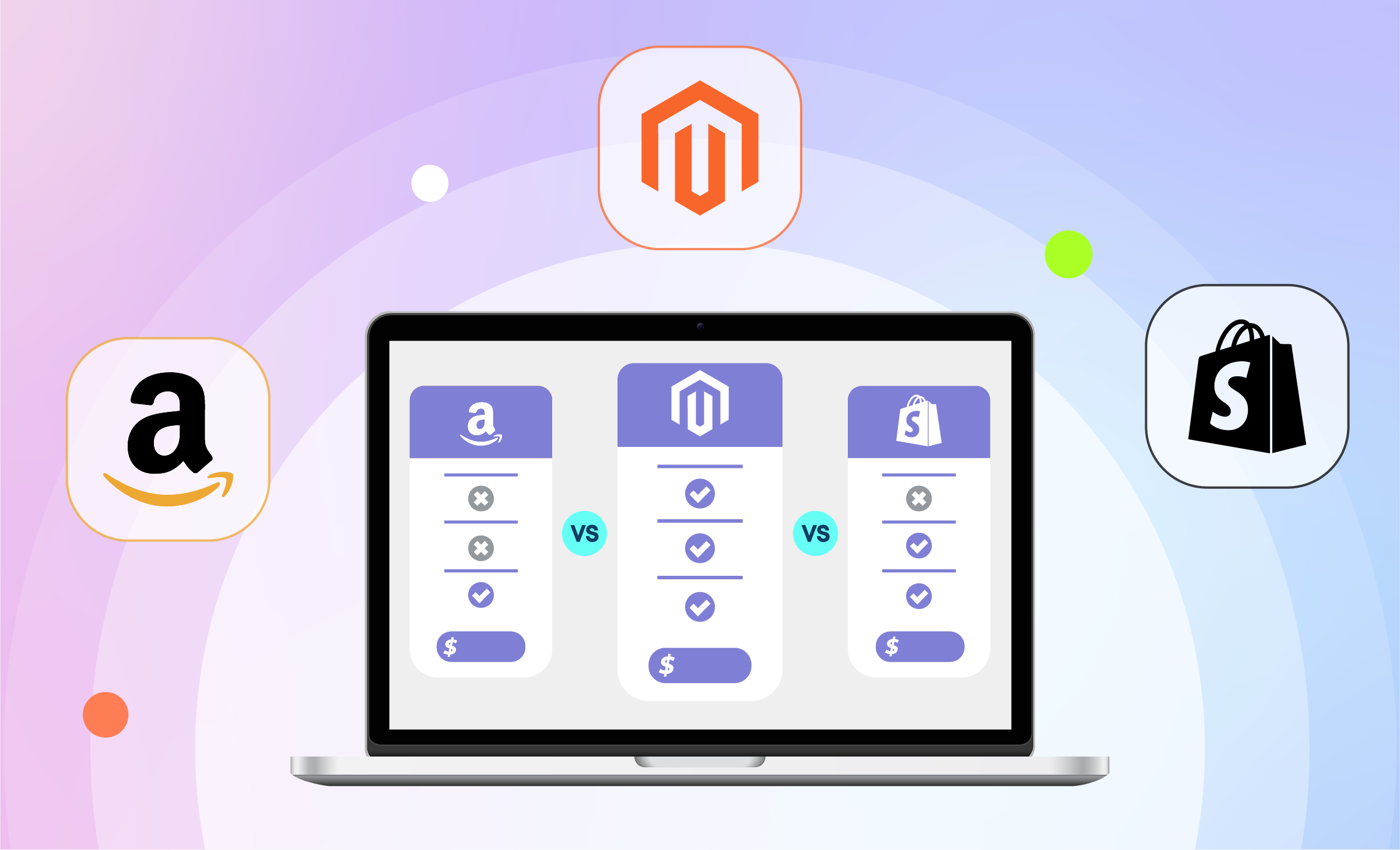Years ago, going “mobile-friendly” meant checking the responsive design box for many international brands. But if your mobile bounce rates remain high, cart abandonment is growing, or WeChat traffic isn’t converting, there’s likely a deeper issue at play.
In China, where an estimated 90% of online purchases happen on mobile and users move fluidly across apps, simply adapting elements to fit smaller screens isn’t enough. While responsive design helps your site display correctly, true performance requires aligning with local platforms, mobile usage habits, and the infrastructure unique to China.
In this blog, we’ll explain how mobile UX expectations in China differ from the West, why most eCommerce platforms fall short, and how to build a faster, conversion-optimized experience that integrates seamlessly with China’s digital ecosystem while staying aligned with your store’s global operations.
Looking to improve mobile UX, platform integration, and digital compliance in China? Explore our China eCommerce solutions to see how TMO helps global brands localize and deliver seamless shopping experiences.
Why Mobile Optimization in China Is So Challenging
In most markets, mobile optimization starts with the fundamentals: responsive layouts, compressed image assets, reduced script calls, and efficient server-side rendering. The goal is simple: make the same experience work smoothly on a smaller screen with fewer delays. And for the most part, that works. Brands adapt their desktop experiences for mobile, test across breakpoints, and call it done. But in China, those surface-level best practices are only the beginning.
While Not Broken, Just Slow? 5 eCommerce Issues Costing you SalesSite speed can be the culprit behind poor UX, ROI, and scalability. We explain common technical issues, where to look, and how to fix them.responsiveness, load speed, and lightweight page structures are all essential, they don’t fully address the technical and behavioral challenges of operating in China’s digital ecosystem. The reality is brands here face a much more fragmented infrastructure, a deeply integrated mobile-first user journey, and platform constraints that amplify even small performance issues:
1. Many Platforms Are Not Built With China in Mind
Even well-known enterprise platforms and cloud tools still struggle to perform optimally in China, because they’re primarily developed for Western infrastructure, user expectations, and digital architecture. This creates several issues for international brands:
- Slow asset loading from non-China-hosted CDNs or blocked resources
- Third-party integrations (tracking, personalization, chat, A/B testing tools) that break or delay rendering
- Mobile checkout flows that aren't fully adapted to local behavior or payment tools
Unless your platform supports custom frontend development or localization at the infrastructure level, your mobile experience in China is likely to be sluggish, fragmented, or incomplete.
For cross-border brands, lacking proper compliance can lead to blocked access, slow site performance, or data security risks. Our digital compliance services for China help ensure your eCommerce setup meets local legal and technical requirements.
2. China’s Digital Landscape Demands a Different Optimization Mindset
As we outlined in our Global Site Speed Disparity: Why Your eCommerce Is Slow in AsiaFrom CDN gaps to compliance blockers, we break down the main infrastructure issues slowing your eCommerce performance in Asia and globally.Global Site Speed Disparity article, speed challenges vary widely by market. But China stands out as uniquely complex not because it lacks modern infrastructure, but because of how deeply its systems differ. Some key technical and infrastructural factors include:
- Device fragmentation: Beyond iOS and standard Android, domestic players like Huawei rely on their own operating systems and proprietary browsers that impact behavior and rendering. Compatibility and performance cannot be assumed across the board.
- Embedded environments: Many users don’t open a traditional browser. Instead, they land on your store via WeChat embedded browsers, Douyin in-app links, or mini-program redirects, all of which interpret scripts, storage, and redirections like login redirects and return flows from payment gateways differently.
- Firewall and external resource latency: The Great Firewall doesn’t just block content, it slows or interrupts requests to non-local resources. If your mobile site fetches third-party scripts, fonts, or assets from global servers, the experience becomes patchy or non-functional in China.
- Heavy High-traffic Crash? How to Ensure Your Store Handles User SpikesWhether it's 618 in China or Black Friday worldwide, traffic surges test your store's limits. Here's how to stay online when it matters most.infrastructure demands during peak seasons: Moments like 618, Double 11, and Chinese New Year drive massive surges in mobile traffic. Even fast-loading sites can underperform without scalable architecture, regional CDN usage, and mobile-first server logic.
In essence, this market is highly integrated, high-traffic, and filled with variables that global templates rarely account for. Mobile performance optimization here requires targeted solutions, not assumptions.
3. Mobile Expectations Are Informed by an Ecosystem of Super Apps
Even if your platform and server stack are perfectly optimized, your site is still competing against the gold standard set by China’s super apps. Users are accustomed to flawless cross-app interactions, lightning-fast mobile UIs, and integrated features like real-time logistics, social sharing, and embedded payments. That means:
- Mobile sites must behave more like apps, with instant page transitions and native-feeling interactions.
- Checkouts must feel familiar, offer local wallets, and avoid redirect errors in embedded environments.
- Post-purchase flows must deliver logistics tracking, e-fapiao issuance, and CRM follow-up within the user’s preferred app.
If you don’t meet these expectations, your store risks bounce rates, cart abandonment, and loss of repeat traffic (particularly from WeChat).
Not yet leveraging WeChat for direct eCommerce? Learn the WeChat eCommerce: Is your brand making the most out of it?From H5 Store & Mini-programs, to Service and Subscription Accounts, this is everything you need to know about WeChat's tools for eCommerce.basics of building a WeChat store to unlock new mobile traffic and conversions through Mini Programs or H5 storefronts.
Technical, UX, & Integrations: Key to a Mobile-Optimized Store in China
Mobile performance doesn’t exist in a vacuum. Since your eCommerce website is part of a much larger ecosystem of platforms, tools, and expectations. The way users arrive at your site, interact with it, and return later is shaped by flows that are unique to the Chinese market, especially when it comes to mobile behavior:
- At the discovery stage, many users arrive via QR codes on physical packaging, links in mini-programs, or redirects from WeChat, Douyin, and Xiaohongshu. These entry points typically open inside embedded in-app browsers, which have their own quirks in handling cookies, redirects, and scripts. If your site isn’t tuned for these environments, users may abandon before they ever see a product page.
- Once inside, browsing happens fast and often on the go. Mobile shoppers in China expect snappy, app-like experiences: responsive layouts, thumb-friendly navigation, and zero lag when switching between products and categories. Even small delays or awkward interactions can break flow and cause drop-off.
- During checkout, frictionless payments through WeChat Pay or Alipay, auto-filled forms, and local e-invoice issuance (fapiao) are expected as standard. And after purchase, logistics tracking, real-time delivery updates, and re-engagement via WeChat all demand back-end integration that syncs with local systems.
To truly optimize mobile experience, consider how your store connects to the multiple stages of the user journey and how well it integrates into the platforms your customers already live in. You can address mobile optimization by focusing on three main areas:
Technical Performance
| Focus Area | Optimization Strategy |
|---|---|
| Speed | Compress and lazy-load images, use WebP or AVIF formats, reduce JavaScript payload, and improve TTFB. Ensure snappy load times on mid-tier Android devices. |
| Browser Compatibility | Optimize for UC Browser, QQ Browser, and WeChat’s in-app browser. Avoid features relying on unsupported cookies, redirects, or third-party tracking scripts. |
| Delivery Infrastructure | Use a China-optimized CDN, reduce DNS requests, host assets locally, and minimize dependency on external domains. |
UX Localization
| Focus Area | Optimization Strategy |
|---|---|
| User Experience | Design for one-handed use with larger tap areas, sticky CTAs, swipe gestures, and less scroll depth. Align layout behavior with local usage patterns. |
| Mobile-Friendly Login | Implement SMS one-time passwords or WeChat authentication instead of traditional email-password forms. |
| Checkout UX | Support Alipay and WeChat Pay, auto-fill addresses, minimize form fields, and clearly show pricing, tax, and shipping information. |
| Fapiao Issuance | Enable fapiao selection at checkout or post-order. Provide digital invoice download and Chinese company info fields. |
| China-Specific UI Habits | Adapt behaviors like persistent shopping carts (used as wishlists), countdown timers, floating promo banners, and highly visual discount callouts. |
Ecosystem Integration
| Focus Area | Optimization Strategy |
|---|---|
| WeChat Compatibility | Support WeChat browser testing, deep linking from official accounts or campaigns, and enable login/tracking consistency. |
| Logistics Tracking | Integrate with SF Express, Cainiao, JD Logistics, or EMS APIs for inline shipment updates, estimated delivery time, and SMS/WeChat notifications. |
| Social Sharing | Add native sharing to WeChat, Weibo, and Xiaohongshu with branded previews and embedded campaign UTM codes for better attribution. |
Shoppers in China expect fast, app-like experiences from branded sites. If a store loads slowly, feels clunky, or breaks inside WeChat, most users will leave without completing their purchase. Every additional second of load time or unnecessary click increases the risk of abandonment. Optimizing across these areas gives you a faster, more consistent mobile experience that users can trust, especially during traffic surges or high-conversion campaigns.
China eCommerce Localization: Why Magento Works so Well
For projects where maximizing performance in China is the focus, we normally recommend Magento (or Adobe Commerce), one of the most flexible eCommerce platforms available offering full control over both frontend and backend. But out of the box, it is not optimized for mobile in especially in a market like China where infrastructure, behavior, and expectations differ from the West.
The good news is that Magento’s flexibility allows you to build the exact experience your users need, with the right compliance front and back end functionalities to localize for the Chinese market.
Magento's China-specific Advantages
- Frontend customization: Unlike closed platforms, Magento gives you full control of the theme. You can tailor page speed, layout behavior, and UI responsiveness to Chinese mobile users.
- Why Headless + PWA is the Future of Scalable eCommerceLearn how headless commerce and PWA empower faster launches, superior mobile UX, and future-proof your enterprise operations and global expansion.Headless architecture: Magento supports a decoupled frontend using PWA Studio, Vue Storefront, or custom Next.js builds. This not only enables fast, app-like interfaces but also allows you to maintain multiple frontends, such as one fully localized for China and its local ecosystem, while managing all operations, inventory, and logic through a single global backend.
- Third-party integrations: Magento can integrate with local payment gateways like Alipay and WeChat Pay, as well as Magento Logistics: Keys to Improving Regional Fulfillment FlowsFrom connecting multiple logistics services to optimizing UX, learn how to build an efficient Magento stack for your CBEC operation.logistics partners and warehouse systems common in Asia.
- PIPL-compliant system integration: Magento allows for customizable workflows that help align with China’s data privacy requirements. You can control where and how data is stored, trigger localized consent flows, and integrate with compliant third-party tools, ensuring that data collection, transfer, and processing meet PIPL standards.
- Scalability: With proper caching, CDN usage, and backend optimization, Magento can handle large product catalogs and high-traffic volumes, even during peak events like 618 or Double 11.
- WeChat Mini Program integration: Magento can serve as the backend for custom-built WeChat Mini Programs, allowing brands to sync inventory, orders, and customer data across both platforms while delivering a native-like experience inside WeChat’s ecosystem.
This is where many brands fall short. They rely on global themes and default settings, which may not be optimized for mobile users in China or the WeChat browser. If you already operate on Magento and want better mobile performance, you don’t need to switch platforms. You need a Magento Performance: 10 Quick Wins + 7 Deep OptimizationsWe covered the fastest Magento 2 speed optimizations you can implement right now, and where to look for when quick fixes aren't enough.better stack configuration and frontend approach.
We covered these and other features in greater detail on our Magento in China: 8 Localization Features for a Successful Market EntryFrom Social Login through WeChat to Mini Programs and Fapiao Support, here are the top eCommerce Must-Haves to boost your eCommerce sales in China.Magento in China: 8 Localization Features for a Successful Market Entry blog.
Optimizing for Mobile in China Through a Phased Approach
If your mobile experience in China isn't delivering the results you expect, it's time to move beyond surface-level fixes. A site that technically "works" on mobile may still frustrate users, lose conversions, or fail inside key platforms like WeChat. Instead of overhauling everything at once, follow a staged approach that brings clarity, fast wins, and long-term performance:
Step 1: Start with a Technical & UX Audit
Before jumping into redesigns or platform changes, get a clear view of how your current setup is performing. A mobile-focused audit can uncover:
- Speed bottlenecks and UX gaps in real usage scenarios
- WeChat compatibility issues
- CDN or infrastructure mismatches
- Missed quick wins in mobile behavior or flow
Step 2: Implement China-Specific Quick Wins
Once you know what’s holding you back, start with improvements that deliver measurable gains fast:
- Align UI behaviors with Chinese user habits
- Streamline checkout and enable fapiao
- Add deep links for WeChat campaigns and native social sharing
- Improve image handling and asset delivery via local CDN
Step 3: Explore PWA or Headless for Long-Term Speed
If your Magento theme is too heavy or inflexible, consider moving to a modern frontend architecture. A PWA or headless setup helps you:
- Build app-like mobile interfaces
- Tailor experiences for China without disrupting global operations
- Improve maintainability and developer velocity
Step 4: Extend into China’s Native Ecosystem
Already optimized your storefront? The next step might be integration. Consider:
- Building a WeChat Mini Program for better conversion inside WeChat
- Launching an H5 campaign site for mobile-first traffic spikes
- Connecting logistics, tracking, and aftersales flows with local APIs
At TMO, we work with global brands operating in China to improve their mobile performance from targeted frontend optimizations to full Magento 1 vs. Magento 2: What Changed & is it Time to Rebuild?Does Magento 2 bring enough improvements to justify a rebuild? We break down the key changes in performance, features, and scalability.Magento rebuilds with headless architecture and WeChat integrations.
We tailor every project based on real user behavior, platform limitations, and your go-to-market needs. Whether you need an audit, a faster frontend, or a mobile-first checkout, our team can support your eCommerce growth without guesswork. Get in touch with our team for a tailored proposal.














